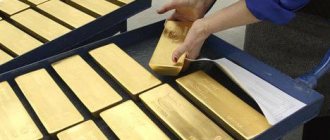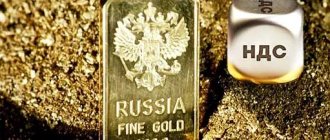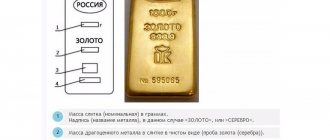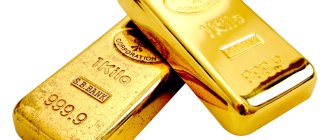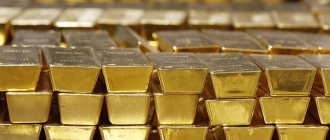Consumer demand for gold, namely jewelry, bars and coins, increased in the first quarter of 2021 for the first time since the beginning of last year. The figure increased by 9% compared to the same period in 2020, to 11.8 tons, the World Gold Council told Izvestia. The main reasons were economic recovery, increased consumer confidence and lower prices for precious metals. Analysts believe that demand could be significantly higher if VAT on gold bars was abolished.
Central bank agreements on gold
With reserves of over 30,000 tons, central banks own one-fifth of all gold ever mined (197,576 tons). To prevent one bank from influencing the price of the precious metal through a massive sell-off, the Central Bank Gold Agreements were drawn up.
The pact, which was signed in 1999 between the main European central banks, limits the amount of gold any bank can sell in a year. The first gold agreement lasted five years and has since been confirmed three times in 2004, 2009 and 2014.
Why are central banks buying gold?
National banks choose this precious metal as a reserve commodity for three main reasons.
Risk reduction
Gold is a well-known investment haven that can perform positively during times of uncertainty and market volatility. It is treated as an asset without liabilities, which increases its ability to mitigate risks.
A famous quote from American banker and financier J.P. Morgan: “Gold is money. Everything else is credit,” highlights another significant advantage of the metal, namely its ability to retain purchasing value.
Central banks seek to buy gold as a hedge against a weakening dollar or any other fiat currency.
The precious metal's role as a tool for portfolio diversification also helps it reduce risk.
The Dutch central bank report states:
Therefore, central banks such as DNB (Dutch National Bank) always store a lot of gold. After all, the yellow metal is the ultimate purpose: an anchor of trust for the financial system. If the entire system collapses, metal reserves will act as collateral to start over. Gold instills confidence in the strength of the central bank's balance sheet and provides a sense of security.
Inflation protection
Hedging against inflation and its consequences is another reason why central banks buy gold. Simply put, inflation is an increase in the price of a basket of goods.
To prevent the impact of inflation on the economy from being too drastic, the state requires investments that are not tied to the dollar, namely precious metals.
Many people view gold as a barometer of the value of foreign exchange instruments. The rising cost of the precious metal indicates that currencies are depreciating.
Ensuring stability and growth
The main function of central banks is to maintain stability and promote economic growth. As currencies become increasingly devalued, banks must ensure that the economy is supported. Thus, gold is used to control the size and growth rate of the market.
Using the example of purchases of the yellow metal by the central banks of China and Russia, the Global Bullion report explains that countries with developing economies are especially susceptible to overheating of the free market and use the precious metal to compensate for risk.
Owning gold helps you avoid a situation where overheating causes the currency to move wildly and cripple industries.
Gold exports will increase
Purchasing gold adds ruble liquidity to the system (the metal is bought for rubles), which, against the backdrop of inflation risks due to the weakening of the ruble, cannot suit the Central Bank, says Egor Susin, head of the Gazprombank Strategy Development Center, another factor. In addition, there is no longer such a need to purchase gold for reserves, since they are declining, and the share of gold in them is growing.
The Bank of Russia's suspension of gold purchases on the domestic market will serve as a further incentive for the export of Russian gold abroad. In May 2021, the Central Bank introduced discounts on the purchase of gold to the world price to encourage gold miners and banks to sell more of the precious metal for export. This policy has already made it possible to increase Russian gold exports eightfold in 2021, to $5.74 billion from $0.7 billion in 2021. More than 90% of this volume went to the UK as the largest gold trading center.
Susin does not rule out that the Bank of Russia could suspend gold purchases, among other things, to support exports. Gold, as one of the export goods, can now compensate for at least part of the losses for the Russian economy. “But in the context of GDP and total exports, this is still not a very significant volume. Russia’s total exports, even after the fall in oil prices, are expected to be more than $250 billion,” the expert said.
Gold in reserves exceeded the 20% threshold
Read on RBC Pro
I won’t sell you pens: why do companies piss off candidates during testing?
New RBC 500: the first rating of the Covid era
“Don’t trade stocks while the stock exchange is open”: 8 rules of Buffett’s student
Why are top managers so eager to return to offices?
However, by March 1, 2021, the share of gold in the international reserves of the Central Bank reached 21% (almost $120 billion in monetary terms). Against the backdrop of the coronavirus pandemic, gold is rising in price on the world market, and the Central Bank’s foreign exchange reserves have begun to decline (over the last reporting week they fell by 5%, or almost $30 billion). Therefore, the share of gold in the Central Bank’s assets will most likely continue to grow even in the absence of purchases. This threatens the goal of diversifying international reserves.
“We understand that gold is quite volatile. But we believe that our structure of reserves should be diversified,” said Central Bank Chairman Elvira Nabiullina in July 2021.
The Bank of Russia seems to have a target for the maximum level of gold in reserves in the region of 20%, says Tom Adshead, head of the Macro-Advisory research department. “Therefore, the fact that other assets of the Central Bank denominated in foreign currencies are declining in dollar terms may mean that the Bank of Russia does not need more gold,” Adshead told RBC.
RBC sent a request to the press service of the Central Bank.
“This decision seems completely obvious to me. Firstly, the Central Bank has about 20% of its reserves as investments in gold. Still, gold is a relatively illiquid investment that is sensitive to market prices. Now is the time in the markets when we have to worry about liquidity,” Natalia Orlova, chief economist at Alfa Bank, told RBC.
The second consideration is that in March the Central Bank for the first time began selling currency on behalf of the Ministry of Finance as part of the budget rule (before that it only bought currency), she continues. “Since the Central Bank, when selling currency, reduces the liquid part of reserves, then in fact the less liquid part (gold) in the structure of reserves will increase,” which is undesirable, adds Orlova. It follows that the Central Bank may return to gold purchases when international reserves begin to grow again (if oil prices recover).
Related materials
00:07 — March 21, 2016
“A creeping way out of the crisis awaits us”
Alexey Kudrin on how best to spend savings for an ordinary person
However, for the Russian Central Bank, buying Russian gold is a very profitable operation: the regulator increases reserves without spending foreign currency. The rubles for which metal is purchased from manufacturers can simply be printed. Moreover, such an issue, unlike the scheme proposed by Advisor to the President of Russia Sergei Glazyev, does not swing the exchange rate of the national currency and does not put pressure on consumer prices. In addition, increasing the volume of gold reserves allows us to better prepare for an economic rainy day. If it comes, it is better to have in reserves not only cash foreign currency, but also full-weight gold bars. But what about the Canadians, who sold almost all of their stock? The country's monetary authorities are too confident in the reliability of their economy to stock up on gold “life preservers.”




